A Demon Turned Heathen
I met a new ‘demon’ yesterday. She was twisted and bent, doubled over with stress and covered in cysts. She walked with a cane, and was orangey-pink and red in color.
When I say ‘demon’ here, I clearly don’t mean the kind of demon that normally springs to mind in popular culture. There were no pitchforks or flames, no  oppression or seeking the ruination of human souls. There wasn’t even anything even vaguely chthonic about this ‘demon’ either, and the only bowels involved were the bowels that live inside my body.
oppression or seeking the ruination of human souls. There wasn’t even anything even vaguely chthonic about this ‘demon’ either, and the only bowels involved were the bowels that live inside my body.
This ‘demon’ was instead more of a body-mind manifestation, and meeting her and hearing her out took my IBS pain from about a four to a zero.
I’m a fan of shadow work and find the process of examining one’s ‘shadow’ to be a useful activity. But as Pagans and Heathens, we’re not so good on the release/resolve stage of this process. Sure journaling, journey, and/or ritual can also help. However, I am yet to find anything within the Pagan/Witch/Heathen sphere that is nearly as effective as Tsultrim Allione’s Feeding Your Demons. Out of all the possible ways for working with one’s shadow (or ‘demons’), this is the method that has brought me the most tangible returns.
So there I was with my ‘demon’, feeding her of myself until she became a beautiful woman in her 30s. I called her ”Mōdsefa” and promised to listen to her. Then we made friends, and my stomach hasn’t hurt since (long may it continue!).
Sitting with Mōdsefa
Since my experience of meeting “Mōdsefa” (a name that felt appropriate for an intelligence that resides in the torso), I have found myself mulling over the role of women and female-presenting people in religious and magical communities.
As all too often happens, synchronicity saw a party going on and also decided to jump into the mix. First I came across an article written by a Zen nun about

how enlightenment is a male fantasy reserved for monks (and the cooking and cleaning reserved for nuns). Then my friend shared a poem/meditation on Mary’s ignored-role in birthing and nursing Jesus. As this poem so ably demonstrates, again men are able to concentrate on the transcendental whereas the woman is left with the bloody and painful practicalities of essentially making that happen. If we are to believe Christian mythology, Mary may have brought Jesus into the world (and is ‘venerated’ – not worshipped – for the fruit of her womb), but women were supposed to be silent in church, unable to give teachings or administer the symbolic representations of the body and blood of that woman-born child. Mary herself would be ineligible to serve the representations of the child that she herself birth and fed. Take some time to think about that.
In the context of both religions, we are nothing but supports for male aspirations and experiences, and like my poor Mōdsefa, our capabilities and contributions all too often ignored.
Heathen Women Then
But this is not just a Buddhist or Christian thing; we see a similar mindset in the gendered roles of Heathen women too. As LMC Weston argued in Women’s Medicine, Women’s Magic: The Old English Metrical Childbirth Charms., the cultural center that was the hall in this period was the domain of men, and the women largely relegated to support roles:
“Where the men’s hall occupies the cultural center and defines that “semblance of order,” women and women’s lives outside the hall in the places where they cooked the food, wove the cloth, and bore the children-all processes, as Sherry Ortner argues, transforming nature into culture-represent a potentially dangerous ambiguity. Given the logical oppositions male/female and human/nonhuman, if the norm for human is male, where does woman stand if not on the boundary between the human hall and the nonhuman wilderness?”
Jenny Jochens makes similar observations in Women in Old Norse Society. Not only were women excluded from all political life (beyond what influence they could garner through incitement and other forms of manipulation(, but they too were relegated to the role of server during feasts (which arguably held religious as well as cultural and religious dimensions). (Jochens 107-108, 113-114)
We modern folks may pretend that the Heathen period woman’s lot was a liberated one, but often the reality is that it might only be described so when compared with the most misogynist societies in Europe.
Heathen Women and Female-Presenting People Today
Unsurprisingly, it’s not uncommon for modern Heathen males (as well as some females) to argue for the same bifurcation of spheres and labor today. This pattern is not unfamiliar in some communities from what I understand, and even among more progressive groups, you may still find the men peeling off to have the more philosophical discussions over beers while the female-presenting humans are left to basically facilitate everything else (or in some

cases face social censure).
For some modern Heathen women (especially on the right of the political spectrum), this is an acceptable state of affairs and considered to be ‘right’, and over the years I have observed attempts to sacralize housework and child rearing in some way in order to somehow make it seem less onerous and more “honored”. As with all “honored” things of this nature though, that “honor” only ever seems to take a form in which the woman/female-presenting person is divorced from physical and personal cost in the minds of men as readily as they are the political and religious spheres. This is “honor” that is convenient for men, and built almost entirely on platitudes and approval-seeking behaviors.
There is nothing wrong with finding fulfillment in housework or child rearing. But let’s not pretend that a polished turd is anything but what it is. True honor is recognizing the personal and physical costs as well as making efforts to include and listen to those you wish to honor in the political and religious processes of your community.
The Reconstructionist’s Dilemma
As with many aspects of modern Heathenism, many of the arguments surrounding the role of female-presenting humans center around history. This is to be expected in a group of religions with heavy reconstructionist influence. However, we do not reconstruct everything, and if anything, our reconstruction is often quite selective. Sometimes this is because we don’t like what the sources have to say, but other times it’s because we recognize that our society and the laws that we live by are very different.
The History of the Spindle Side
Like my poor, ignored Mōdsefa ‘demon’, the history of women and other female-presenting humans is all too often ignored. Though credited with preserving older tales while at work at spinning and in the weaving rooms by scholars such as Rumpf, women as a whole are left out of the conversation. No  one talks about the labor of birthing the next generation, the countless hours spent clothing families and producing textiles to sell, or how it was the work of women that created the sails that drove the ships and enabled mankind to first go into space.
one talks about the labor of birthing the next generation, the countless hours spent clothing families and producing textiles to sell, or how it was the work of women that created the sails that drove the ships and enabled mankind to first go into space.
Whereas men have told their stories loudly and publicly, women have told them together and behind closed doors. Men have produced text and books of pages whereas women have produced textile and books of embroidery (Karen Bek-Pedersen 2007, pp 154 – 156).
And through it all, women (whether they understood themselves to be so or not) have worked to find their own ways to the holy (be it through cooking rice or renouncing the world in order to join religious communities for women).
In the Völuspá, ‘primal law’ (ørlög) is depicted as being something that is decided, scored, and spoken by women, and it is the völur that chooses and speaks the fates of men when asked at seance (Karen Bek-Pedersen, pp 200 – 201). There is a lot of power in choice, and I would like to see those of us who are either women or female-presenting people become choosers too.
I would like to see us choose solidarity and throw off the centuries of negative PR surrounding friendships between women (read Silvia Federici for more on that). I would like to see us choose to support each other and our own aspirations (be they spiritual or mundane). Finally, I’d like to see us choose a better path for our children. Because if there is one thing we can never forget, it’s that the patterns we create now, are what they will have to live with in the future.
So choose deliberately, friends, and learn to listen to the women/female-presenting people in your lives because we can do amazing things as a species when we actually work together.

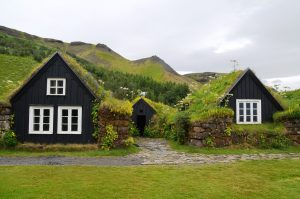
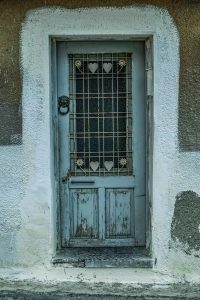 living. But their visits also brought sickness, and that’s just what they brought to the people of a place called Frodis-water.
living. But their visits also brought sickness, and that’s just what they brought to the people of a place called Frodis-water.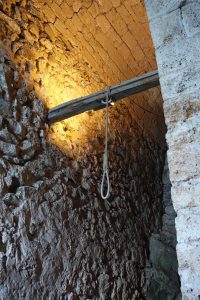 some of those laws might be. I am going to infer one right now: that our rights to this world are lost when we breathe our last.
some of those laws might be. I am going to infer one right now: that our rights to this world are lost when we breathe our last.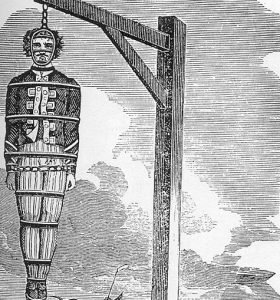 The story of the door-courts suggests that both living and dead are equally bound by the law. We also see this reflected in the burial customs of those deemed to exist outside the protection of the law. These were often the criminals left to rot at the crossroads, those buried in unhallowed grounds, and those who were too young at the time of their passing to be formally accepted in a community (Petreman “Preturnatural Usage”). Is it any coincidence that the materia magica sought from the human body came most often from these sources? Is it also coincidence that those were the sources thought by the Ancient Greeks to carry the least miasma (Retief “Burial”)? To exist as dead inside the protection of the law is to sleep soundly – or at least it should mean that. Of course, there have always been violations as Burke and Hare could well attest.
The story of the door-courts suggests that both living and dead are equally bound by the law. We also see this reflected in the burial customs of those deemed to exist outside the protection of the law. These were often the criminals left to rot at the crossroads, those buried in unhallowed grounds, and those who were too young at the time of their passing to be formally accepted in a community (Petreman “Preturnatural Usage”). Is it any coincidence that the materia magica sought from the human body came most often from these sources? Is it also coincidence that those were the sources thought by the Ancient Greeks to carry the least miasma (Retief “Burial”)? To exist as dead inside the protection of the law is to sleep soundly – or at least it should mean that. Of course, there have always been violations as Burke and Hare could well attest.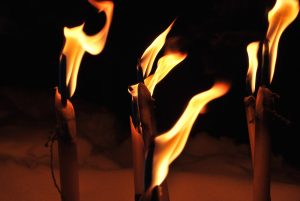 the holy powers, but fire also played an important role in property ownership too. For the Norse, carrying fire sunwise around land you wished to own was one method of claiming that land (LeCouteux 89), and under Vedic law new territory was legally incorporated through the construction of a hearth. This was a temporary form of possession too, with that possession being entirely dependent on the ability or willingness of the residents to maintain the hearthfire. For example, evidence from the Romanian Celts suggests that the voluntary abandonment of a place was also accompanied by the deliberate deconstruction of the hearth. And the Roman state conflated the fidelity of the Vestal Virgins to their fire tending duties with the ability of the Roman state to maintain its sovereignty. The concept of hearth as center of the home and sign of property ownership continued into later Welsh laws too; a squatter only gained property rights in a place when a fire had burned on his hearth and smoke come from the chimney (Serith 2007, 71).
the holy powers, but fire also played an important role in property ownership too. For the Norse, carrying fire sunwise around land you wished to own was one method of claiming that land (LeCouteux 89), and under Vedic law new territory was legally incorporated through the construction of a hearth. This was a temporary form of possession too, with that possession being entirely dependent on the ability or willingness of the residents to maintain the hearthfire. For example, evidence from the Romanian Celts suggests that the voluntary abandonment of a place was also accompanied by the deliberate deconstruction of the hearth. And the Roman state conflated the fidelity of the Vestal Virgins to their fire tending duties with the ability of the Roman state to maintain its sovereignty. The concept of hearth as center of the home and sign of property ownership continued into later Welsh laws too; a squatter only gained property rights in a place when a fire had burned on his hearth and smoke come from the chimney (Serith 2007, 71).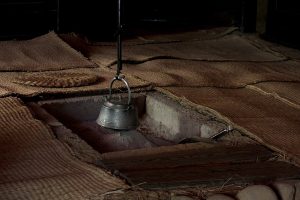 fires burning. To maintain the hearth was to maintain possession of property, and to maintain the hearth, a woman was required. (Or several, if you happen to be the Roman state.)
fires burning. To maintain the hearth was to maintain possession of property, and to maintain the hearth, a woman was required. (Or several, if you happen to be the Roman state.)